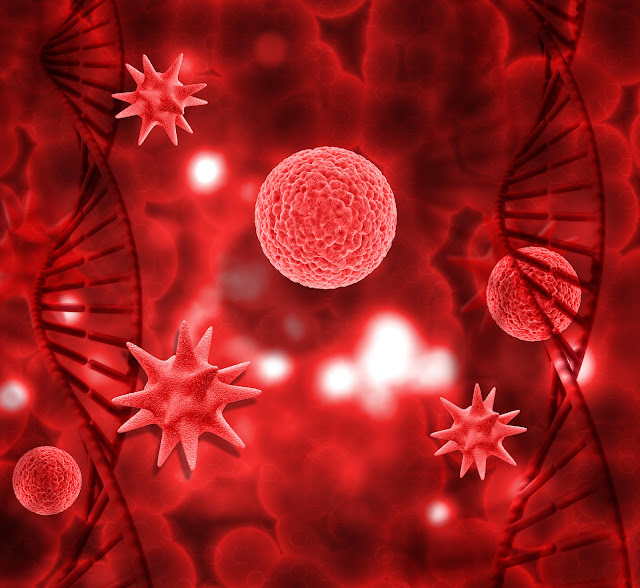Understanding Sickle Cell Anemia: Causes, Symptoms, and Treatment Options
Sickle cell anemia is a genetic disorder that affects the hemoglobin protein in red blood cells. People with sickle cell anemia have abnormal hemoglobin molecules that can cause the red blood cells to become hard, sticky, and curved like a sickle. This can lead to various complications such as pain, anemia, organ damage, and increased risk of infection.
Sickle cell anemia is caused by a mutation in the HBB gene, which provides instructions for making the beta-globin subunit of hemoglobin. This mutation causes the production of abnormal hemoglobin known as hemoglobin S. Sickle cell anemia is inherited in an autosomal recessive pattern, which means that a person must inherit two copies of the mutated HBB gene (one from each parent) to develop the condition.
Symptoms of sickle cell anemia can vary in severity and include pain episodes (known as sickle cell crises), fatigue, shortness of breath, delayed growth and development in children, and yellowing of the skin and eyes (jaundice). Complications of sickle cell anemia can affect various organs including the lungs, kidneys, liver, spleen, and bones.
There is currently no cure for sickle cell anemia, but treatments are available to manage the symptoms and prevent complications. This includes pain management, blood transfusions, and bone marrow transplants in some cases. Antibiotics and vaccinations are also important for preventing infections.
Prevention of sickle cell anemia involves genetic counseling and testing for carriers of the HBB gene mutation. Prenatal testing can also be performed to determine if a fetus has sickle cell anemia.
Sickle cell anemia is most common in people of African descent, but it also affects people of Hispanic, Middle Eastern, and Mediterranean descent. It is estimated that sickle cell anemia affects 70,000 to 100,000 Americans and millions of people worldwide.
In conclusion, sickle cell anemia is a genetic disorder that affects the hemoglobin protein in red blood cells. While there is no cure, treatments are available to manage symptoms and prevent complications. Prevention involves genetic counseling and testing for carriers of the HBB gene mutation. Increased awareness and funding for research can help improve the lives of those affected by sickle cell anemia.
Sickle cell anemia is the most common form of sickle cell disease, which is a group of inherited red blood cell disorders. Other types of sickle cell disease include sickle cell trait, sickle cell-hemoglobin C disease, and sickle cell-beta thalassemia.
8888888888888
Sickle cell anemia can cause a wide range of complications due to the abnormal shape and function of the red blood cells. Some of the most common complications include pain episodes, which can occur in any part of the body and can last for hours to days. Pain episodes are caused by the sickle-shaped red blood cells blocking the small blood vessels, leading to tissue damage and inflammation.
Another complication of sickle cell anemia is anemia, which is a shortage of red blood cells that can cause fatigue, weakness, and shortness of breath. Anemia occurs because the sickle-shaped red blood cells have a shorter lifespan than normal red blood cells and are more likely to rupture.
Sickle cell anemia can also cause damage to various organs in the body. For example, the sickle-shaped red blood cells can block the blood vessels in the lungs, leading to a condition called acute chest syndrome, which can be life-threatening. In addition, the liver and spleen can become enlarged due to the accumulation of sickle-shaped red blood cells.
Treatment for sickle cell anemia focuses on managing symptoms and preventing complications. Pain management is an important aspect of treatment, and may involve nonsteroidal anti-inflammatory drugs (NSAIDs), opioids, or other medications. Hydroxyurea is a medication that can reduce the frequency of pain episodes and other complications in some people with sickle cell anemia.
Blood transfusions are another treatment option for sickle cell anemia, and may be used to treat severe anemia, prevent stroke, or reduce the risk of complications during surgery. Bone marrow transplants may be considered for people with severe sickle cell anemia who have a compatible donor.
In addition to medical treatment, people with sickle cell anemia can take steps to manage their condition and reduce the risk of complications. This may include staying hydrated, avoiding extreme temperatures, getting regular check-ups, and taking antibiotics and vaccinations as recommended by their doctor.
Overall, sickle cell anemia is a complex genetic disorder that can cause a range of complications. While there is currently no cure, treatments are available to manage symptoms and prevent complications. With proper care and management, people with sickle cell anemia can lead full and productive lives.
 Reviewed by Der Arzt
on
4:22 AM
Rating:
Reviewed by Der Arzt
on
4:22 AM
Rating:














No comments: